Last Updated on March 29, 2022
Gasoline and diesel automobile engines are dependent on a moderately complex fuel delivery system. This system brings fuel to the engine at the precise flow and pressure to enable proper operation.
For most modern cars, one or more fuel pumps are the heart of this arrangement. When one of these pumps fails to perform properly, your morning drive to work may suddenly be interrupted.
Fortunately, there are certain signs of a bad fuel pump that you can look for when troubleshooting the issue.
How a Fuel Pump Works
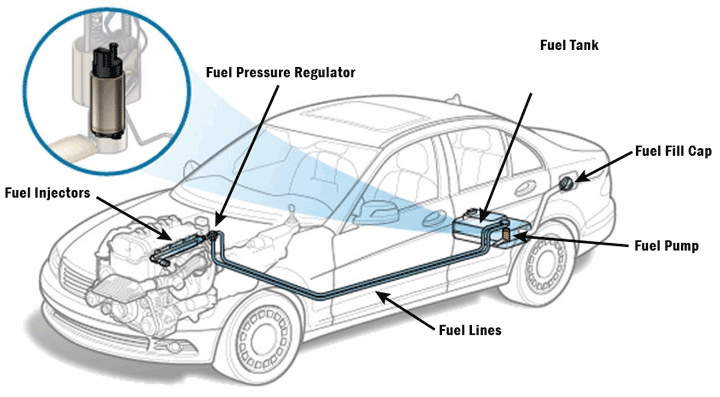
How does this fuel delivery system operate? In principle it’s quite simple. From your car’s fuel tank, metal piping conveys fuel to the engine.
An electric fuel pump, generally located inside the tank, clicks on when you start the engine and the vehicle’s ECM instructs the fuel pump relay to turn it on. You may hear its tell-tale whirring sound. The pump pressurizes the fuel and pushes it through the piping.
Under the hood, a second electric or engine-driven mechanical pump is used in many cars to boost fuel pressure. At high pressure, the fuel will be sprayed into the engine through precisely timed fuel ports called fuel injectors.
This arrangement is very reliable. When it’s working well, your engine will start quickly and run with remarkable enthusiasm.
See Also: Fuel Gauge Reading Incorrectly? (Causes and How to Fix)
Fuel Pumps Can Fail
But it’s not a perfect world. Stuff happens. And occasionally it happens to your fuel delivery system. One troublesome event with this system can be the fuel pump failing to either pump sufficient fuel or any fuel at all.
With insufficient fuel your engine will run very poorly. When no fuel is supplied, your engine will suddenly stop and will not restart until pumping is restored.
Bad Fuel Pump Symptoms
Often before the fuel pump quits completely, behavioral symptoms begin to tell you something is not quite right. Your car may exhibit one or more of these if your vehicle’s fuel pump is on its way out or has already failed.
#1 – Difficulty Starting (or Can’t Start at All)
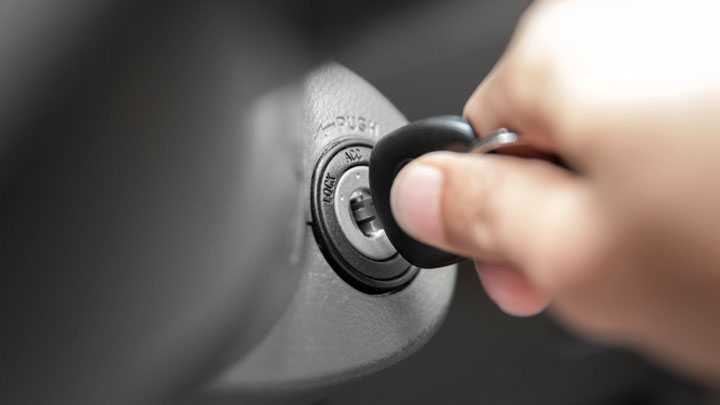
This is that grim moment when you turn the key (or push the button) and little or nothing happens. Cranking the engine can take longer than normal. Sometimes way longer. And a failure to start at all will be painfully obvious.
#2 – Sudden Engine Stalls
As if without cause, your engine will stop running. At most any time. This can be a simple annoyance if idling in your driveway or downright dangerous if it happens on the road.
A description of just such an event is provided below (skip to: “A Real World Example of Fuel Pump Failure“).
#3 – Rough Running at Idle and Low Speed
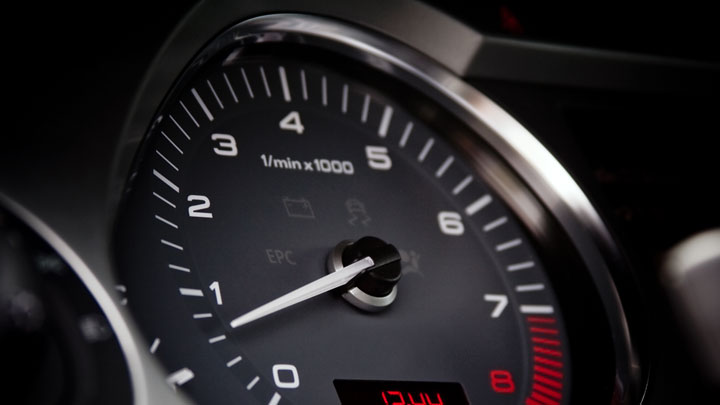
Rough running as a one time event is generally not an issue. But if this recurs frequently, take notice. Fuel pump problems may be the cause.
#4 – Engine Misfires
Misfires will be felt more than heard. A series of misfires will feel like the car is bumping through a bunch of large soft pillows. Because misfires can eventually damage your engine, correcting the related fuel pump problem as soon as possible is very important.
#5 – Hesitant Acceleration

Typically your car will quickly accelerate from a full stop. This instant response is important when turning onto a busy street or merging into traffic on the highway from an onramp.
Delayed or pokey response when you step on the gas can occur when the fuel pump is failing.
#6 – Engine Speed Variations While Driving at a Steady Speed
Ups and downs in fuel flow can cause surges in power. The car will want to accelerate, slow down, and then repeat this cycle. This behavior can be risky on a crowded highway.
#7 – Reduced Power
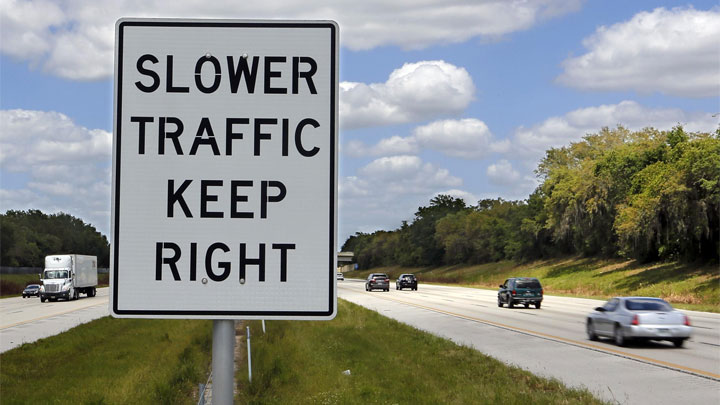
With an insufficient supply of fuel, you may notice a reduction in power. At times, this can mean you lose the ability to reach and maintain highway speeds making your vehicle a moving obstacle.
If this happens, turn on your flashers and get off that busy road ASAP. Stop and call for help.
#8 – Poor Performance When Climbing a Hill
We do not live in a flat world. Most of us anyway. Hills abound, and meeting a hill or other incline your car can’t climb is just another indication the fuel system is calling it quits.
#9 – Increased Fuel Consumption
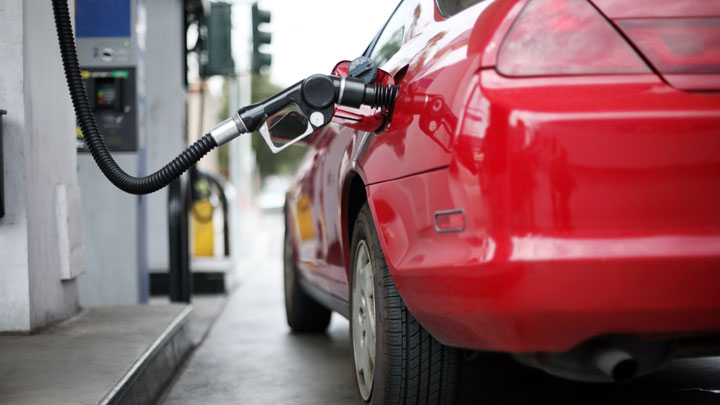
A failing fuel pump can affect your engine by increasing fuel consumption. Should you notice this with no other unusual symptoms, having your fuel system checked by a qualified service technician is strongly advised.
#10 – Check Engine Light Comes On
The glowing Check Engine Light can tell you you have a fuel pump problem. An in-depth discussion of onboard diagnostics and this indication of fuel pump failure is provided below.
In general, when the fuel pump is off its game, your car may act a bit herky-jerky. It will feel unwilling to run with any of that old enthusiasm you loved so much. Such ill behavior will be instantly noticeable to most drivers.
A Real World Example Fuel Pump Failure

Fuel pump performance problems can occur intermittently. But trouble can be followed by periods of perfect serendipity. It’s just life.
Imagine driving to work on the freeway and your trusty car suddenly loses power and comes coasting to a stop. Not only embarrassing, this event can put you in danger just getting over to the breakdown lane.
So, you try to start it, and it fires right up. Yayyy! You pull back into traffic. Everything seems fine until the same failure occurs minutes, hours or even days later. Your once reliable friend becomes an inconstant monster now willing to let you down on a moment’s notice.
An intermittent problem like this can pester you repeatedly until the ailing pump gives up completely perhaps leaving you stranded.
Why Fuel Pumps Fail

What causes lie in wait to ambush you with this kind of problem? Here are some common ones:
Pump Issues
Late model automotive pumps are complex and may include pressure control and/or relief valves. Failure of these features can reduce output pressure or recirculate fuel back into the tank leaving none for the engine.
Fuel Problems
Contamination with sludge from that backcountry service station fill-up last week can gum up a pump or block its inlet screen. Reduced or zero flow will result.
Related: How to Dispose of Old Gas
Clogged Fuel Filter
If not replaced at normal service intervals, a fuel filter can become clogged with silt or even water. This can restrict fuel flow and cause pump failure symptoms. Reduced flow can also cause a pump to overheat resulting in permanent pump damage.
Damaged Fuel Line(s)
A tire-launched pebble can dent one or more fuel lines pinching fuel flow thus mimicking fuel pump failure.
Old Age
Things simply wear out with age. Age degradation can bring any pump to its knees though such would not be expected until well beyond 100,000 miles.
An Early Warning from Your Instrument Panel

With fuel system problems, your instrument panel can be your silent but capable partner. It can provide you with an early warning of looming fuel system problems before you get stranded.
How, you ask? Have you ever noticed that yellow “Check Engine/Service Engine Soon” light? It blinks on and then off when you start the engine. Look for it next time you hop in the car.
Your owner’s manual will show you what this light looks like and where it’s located. All cars 1997 or newer will have this warning feature.
How the Onboard Diagnostic System Works
This light is going to come on when the onboard diagnostic (OBD) system detects any one of several emission system problems.
The fuel system problems it will note include repeated engine misfires and/or abnormal variations in fuel pressure. These can happen when the fuel pump begins to struggle.
And this warning will often occur well before severe running problems leave you stalled alongside the road.
A Warning that Should be Heeded
Never ignore this warning light. Indeed, continued operation of your car with this light glowing can result in engine or related system damage that could be extremely costly to correct.
When this light comes on, you should always seek professional help. Soon!
Diagnostic Fault Codes: How They Help You
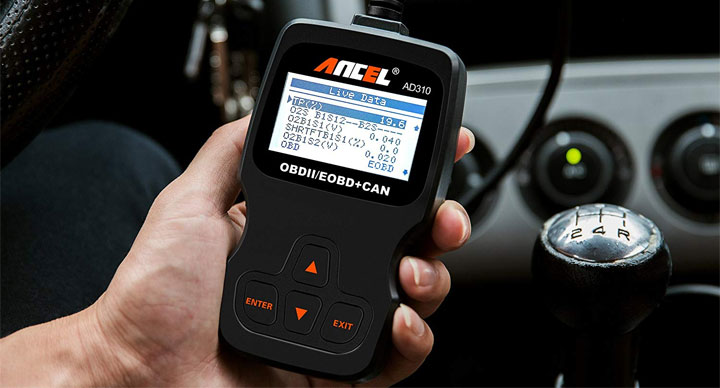
This light provides a warning, but it signifies much more. With this alert, the onboard diagnostic system gets busy and stores one or more diagnostic fault codes (DTC). These codes can be interpreted to tell you the nature of the problem.
A local auto parts store can generally evaluate the stored codes for you at no cost using a special tool called an OBD-II scanner. If you’re serious about doing you’re own automotive repair or maintenance, this automotive scan tool will usually pay for itself after a few uses.
However, while knowing what fault codes were triggered is helpful, it often proves far more beneficial to take your car or truck to a competent service technician. Such folks can provide accurate diagnosis as well as any needed repairs.
At the Repair Shop
Now the hard part. If your technician finds the fuel pump to be the cause of your fuel system problem, replacement could be costly. Additionally, the replacement pump may have to be ordered. Your favorite ride may have to sit at the shop awaiting that part.
In this case, most dealers will offer you a loaner car for use until yours is fixed. Or at the least they will offer to give you a ride home if you are stranded.
This benefit is not so common among independent repair shops. Should they have a pump in stock or can get one quickly, replacement usually takes no more than two to three hours.
Fuel Pump Replacement Cost
Best places to order parts? See: 19 Best Online Auto Parts Stores

Let’s look at costs. A typical fuel pump replacement will require $120 to $240 for labor. Parts cost will be added to this. Depending on your year, make and model, a new pump price can range from as little as $100 to $1200 or more.
Late model cars will have far more costly pumps than, say, a 15 year old rig. Other parts like new clamps, fittings and interconnect hoses may also be needed. Include $50 to $75 for these.
The total could run from as little as $270 to over $1500. Any sales tax will increase your final bottom line. To save a bit of money, opt for a good independent repair shop instead of the dealership and consider an aftermarket pump versus what may be a costlier OEM (original equipment manufacturer) unit. But in most cases, it’s recommended to go with an OEM pump.
Warranty Considerations
As already mentioned, both parts and labor pricing will generally be higher at a dealer service department than with an independent shop. But with a dealer you will likely get a better warranty than a private shop can offer.
Last, if you are going after competitive repair estimates, be sure to ask about this warranty. And when you return to pick up your car, do make sure you have that warranty in writing.
Final Thoughts
You are heading back home with a bit of a smile. The car is running perfectly. What can you expect down the road? As when the car was new, you should be able to look forward to another 100,000 miles with no fuel pump problems. Happy Motoring.




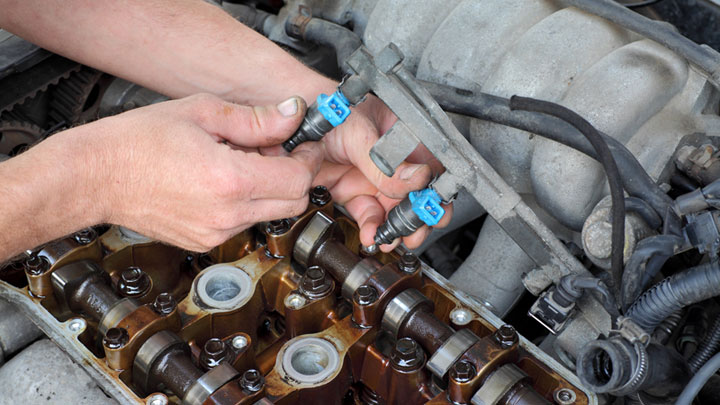
My car start normal when the engine is cold. But struggling to start when the engine is hot. Could be fuel pump?
check when vehicle run, how much is maximum speed
if fuel pump weak, sometimes a vehicle speed cannot reach even 30km/h then engine stall…
My fuel guage is not consistant. It reads one amount when it starts and another when I’m driving. Why is that?
Do you park on a hill? Fuel is usually measured from a float attached to the fuel pump assembly. If your vehicle is parked at a steep angle, it may change the position of the float, thus giving an inaccurate reading.
Additionally, some vehicles do not read the fuel level correctly (or at all) when the vehicle is not running.
Parking on a hill
bad sending unit
bad fuel gauge or cluster
float stuck
If no performance issues with vehicle, and dont want to pay just to find out, do some math and keep track of fuel level in your head or on note pad. You will need the actual L/100km or mpg the vehicle gets. Can be found usually within the vehicles information on instrument cluster. If not, its more math first.
Hi. I have a Daewoo lanos 1.6 1998 8 valve. Recently overalled the engine. Driving about a week, the engine fails to start now. There is spark at spark plugs, but no fuel reaching the fuel injectors. Squirting some fuel into the air take the engine starts, as soon as the fuel is finished the engine stalls.
If I check that there is fuel at the fuel pipe as it comes out of the tank, it is a little when ignition is switched on, but when I switch ignition off and back on there is no fuel. I removed the petrol pump and tested the pump in a bucket of water directly connected to a battery and it had a full and strong pressure stream. I’ve taken off the fuel lines and checked them for blockages but they were clean. As soon as I replaced the pump into the tank, then there is a weak pressure, and not all the time a flow of fuel. It takes several turns before there is a teaspoon full of fuel coming out of the tank. I have replace the fuel pump about 8 months ago. Could you please advise what the cause could be, if possible.
Kind regards.
Angela
Test your fuel pump relay and make sure it is fully seated. You may also want to test injectors next. I have heard (but not experienced) that fuel injectors can become clogged if you run a fuel system cleaner through a car with a really dirty tank. Sometimes the cleaner will pick up sediment that clogs the injectors just enough to restrict flow. Good luck on your search. It sounds like you are on the right track.
Could be electrical, check relay and you’ve determined fuel not reaching injectors so dont waste time looking at them, youve done a more then adequate pump test so you know pump is working, only leaves lines. Go back and inspect again between injectors and tank. Check at connections and fittings and that no part of line is kinked or pinched.
To trace for sure, starting right at tank, unhook fuel line from fitting on tank that is directly connected to pump and connect a rubber hose to fitting running to bucket. Have someone else start vehicle and watch the pressure as it sprays into bucket, if its good, hook line up to tank and move down the line to next junction, fitting or connection of any type. Disconnect there and do same thing with rubber hose into bucket. When you see an obvious pressure change or lack of pressure youve found your clogged part of line and/or clogged fitting. This is time consuming and can be labour intensive if doing without a lift but it is 100% definitive.
My fuel mileage display has started to constantly change.. I watched it go from 15.5 down to 11.2 mpg in less than a minute of driving this morning however it ran fine. It finally stayed at 13.6 mpg after a short drive. I have noticed lately it seems to be using more fuel (midgrade). any ideas?
Make sure you don’t have any check engine lights. A faulty O2 sensor could cause the car to run rich, which would reduce fuel economy.
Changing spark plugs is cheap and easy if they haven’t been touched in a while. Sometimes you may see fuel economy decrease when plugs are old and not able to consistently burn the air fuel mixture efficiently.
Pay attention to any changes in your environment or driving habits. Colder weather reduces fuel economy, as does driving with a lead foot. Stop and go traffic is not friendly on fuel economy either.
Make sure you’re running whatever octane fuel the manufacturer recommends in your owner’s manual. If 87 octane is recommended, running 89 probably won’t give you better fuel economy.
Hi Sean. Could MAF sensor effect fuel consumption and MPG? On average I should be getting around 40mpg on Mondeo mk4 2.0 diesel but seem to be stuck on 33.7mpg even on long smooth drives. Also the fuel guage flactuates. DTC says P00BD but no ELM.
Yes, if your MAF is dirty that may affect how much fuel the car injects, and thus your fuel economy. Check the MAF circuit and test the MAF sensor to make sure it is operating properly. You should be able to find the procedure in your vehicle’s factory service manual. If you decide to try cleaning the MAF, use MAF sensor cleaner and nothing else.
While you’re in there, I’d also check the basics – when was the last time your engine air filter and fuel filter have been replaced (assuming the fuel filter is serviceable)?
I dont have a direct suggestion to the actual question but will suggest to you this to save you money on a weekly basis, quit putting mid grade fuel into vehicle. Regular 87 octane fuel is all that is required by 99% of vehicles that are daily drivers and using mid or high octane fuel absolutely will NOT give you better mileage, simply better performance (for which mileage is not an indicator of).
2012 Dodge Avenger 2.4L that starts and idles fine but when you try to accelerate it dies and will not start back until it has sat for awhile. The fuel fuel filter is built into the fuel pump so we replaced the fuel pump. We drove it around and it was starting and stopping just fine. Several hours later I go to drive the car to the store. When I got back into the car it would not start. I let it sit several minutes and it started back to only die when I accelerated. I was able to get it home but wanted to know what I should be checking/replacing next that could be causing this problem.
I’m not sure. It sounds like you may have an intermittent issue on your hands that will be a bit tricky to diagnose.
If you are mechanically inclined, I would start with the basic troubleshooting steps like scanning for codes and checking spark plugs, coils, and injectors. If you’re not sure how to do that, it would be best to bring your car to a mechanic for a diagnosis of the issue.
I have a 15 kia Optima, the check engine light is on scan tools says fuel rail pressure system low, it take several seconds to crank,strong oder of what smells like burnt fuel or something and studder/hesitation on quick acceleration
also heavy presence of black soot in tail pipe,this began the day after putting a bottle of dollar tree gas treatment in tank(may/may not be related),if i turn the key to the on position for about 10 seconds it cranks right up if not i have to crank the engine about 10 seconds before it starts..any sugesstions?
I’m not sure. You’ll probably have to take it to a local mechanic to know for sure what the problem is.
Hello I have Subaru wrx 2019 model I’m encountered trouble when I’m running 140km/h then suddenly slowdown & got a lot’s of warning indication. Then now my car in subaru services. The mechanics tell that my fuel pump is prob, but my car is 1 1/2years running already 29061km.
Why I encountered that my car is new?
Please let me know also what the status of the new car that replacing fuel pump?
Have you done any modifications to your Subaru? It’s unusual that a fuel pump would go out so early like that.
Nope, only I added strut bar.
Me too surprised for early major problem, my worries if this my future problem after changing the fuel pump? Car still under warranty. Can u please advise me for better demand to the dealer company? Thank you
Well, this is the very reason new cars come with warranties. Sometimes parts are defective and these problems usually surface pretty quickly in your ownership experience. I would get the fuel pump replaced under warranty and see how it drives. It should cost you nothing but the time it takes to drive the car to and from the dealership. The car should be perfectly fine after that.
Don’t drive 140 km/h and see if the problem persists. If it only happens when reaching or driving 140 km/h its a small sacrifice and will probably save your life to slow down. They dont just put in “lot’s of warning indicators” to see how colorful they can make instrument cluster, they are there for a reason. I doubt its the fuel pump, if its not covered under warranty stay the hell away from the dealers. Find a good reputable local mechanic instead to diagnose problem but before that I would start by slowing down.
Off forum topic but worth a mention, Im not sure people realize how little time is saved by driving somewhere fast. This was put into perspective for me when a three hour trip was driven by both myself in one vehicle and my wife in a separate vehicle. We left at same time, I drove like a maniac much of the time reaching speeds of 150-160km/h I got home, heart pounding, hands sweaty, knuckles still white, she pulls into the driveway 8 minutes later. I said wow, you musta been flyin too, she say no, 110 whole way. 8 minutes I saved, the time it takes to get a coffee. 300+km trip, thats a lot of km’s and a lot of people to be endangering lives. I dont speed anymore, risk vs reward is not worth it.
Agreed 100% about keeping speeds down on public roads. Since the WRX is a sporty car, perhaps Rhodora wishes to track the vehicle. If so, speeds in excess of 140 km/h happen every single lap.
In my case, I have Toyota Corolla 2003, it’s suffering from hesitation during acceleration, mechanics have change filter, fuel pump twice, injectors, new iridium spark plug, yet the problem persists. What can I do? Tired of hole in the pocket
Sounds like they shot the parts cannon at your car, which gets pretty expensive. Try to find a mechanic in your area who does really good diagnostics work. It’s worth paying a small amount for a proper diagnostic, then you can go from there once you know what’s causing the problem.